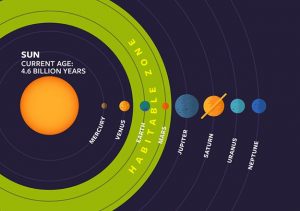Past and Present
Humans have always been a curious species and have spent lots of time trying to figure out the mysteries of the universe. From launching thousands of satellites to space to landing a man on the moon, space exploration has continuously advanced through time. In the past, space agencies from around the world have completed various missions to space to explore different stars and planets such as the Moon and Mars. Humans continue to explore as they did in the past and now once again there is an increasing interest in space exploration.
In the past few years, there has been an increasing interest in searching for possible planets for humans to survive on. This has led to increased funding for research on planets like Mars. Mars is one of Earth’s closest neighbouring planets. Mars was first discovered in 1609, by Galileo Galilei who first saw it through a telescope. Since then, many satellites, probes and rovers have been sent to Mars to examine its surface and look for water and other signs that can help sustain life. Mars falls within the habitable zone in our solar system known as the Goldilocks zone. The Goldilocks zone is a zone around a star which is at a distance with a suitable temperature allowing liquid water to exist. The zone is shown in the image below. Research has shown signs of water on Mars but due to its thin atmosphere, much of it has frozen or evaporated. There are methods which are possible to artificially warm-up Mars according to space companies such as SpaceX. Mars also has 38% gravity of Earth which researchers suggest humans can adapt to. Moreover, a day on Mars is about 24 hrs and 37 min which is very similar to a day on Earth. While many factors determine the ability of a planet to support life, these factors have led scientists to consider Mars as a possible candidate for supporting human life.

Credit: Cornell University
Found on NASA astrobiology website
The Future
Due to the amount of radiation on Mars surface humans cannot walk around unprotected. The thin atmosphere on Mars would have to be shielded from solar winds and life on Mars would be mostly spent living in capsules. Many researchers and space organizations believe that Mars can be transformed into a fully habitable planet like Earth over time. Many organizations and companies like NASA and SpaceX are expanding Mars research and looking for ways to fix these problems. SpaceX has a plan to send its first crew to Mars in the year 2024 while NASA has a more long term plan which includes sending crews to the Moon first as a preparation for larger missions to Mars. The video below shows how life on Mars would initially look like. As more research is done, humans will become one step closer to understanding ways of colonizing other planets such as Mars.
– Sandeep Singh

4 responses to “From Earth to Beyond: Colonizing Mars”